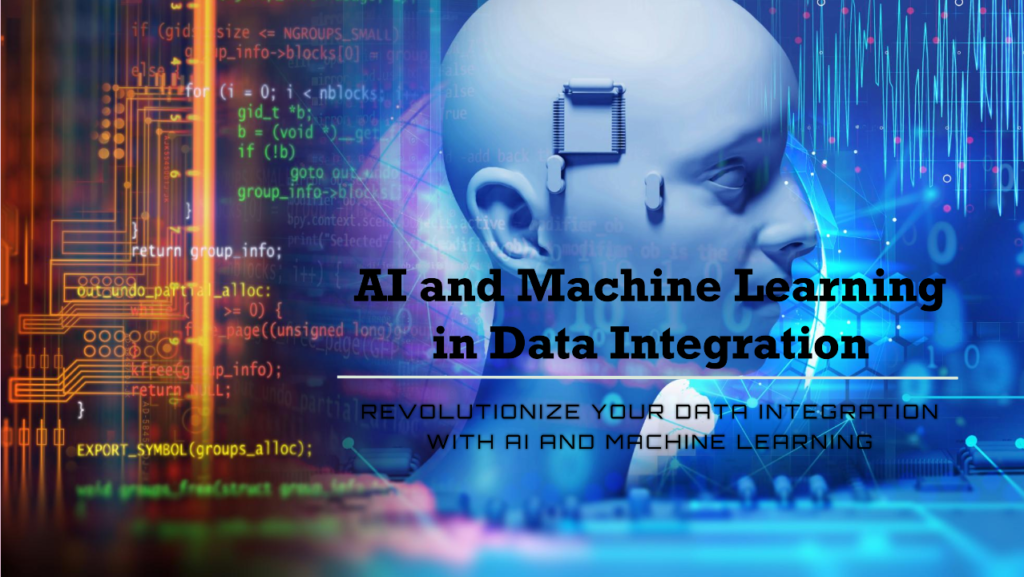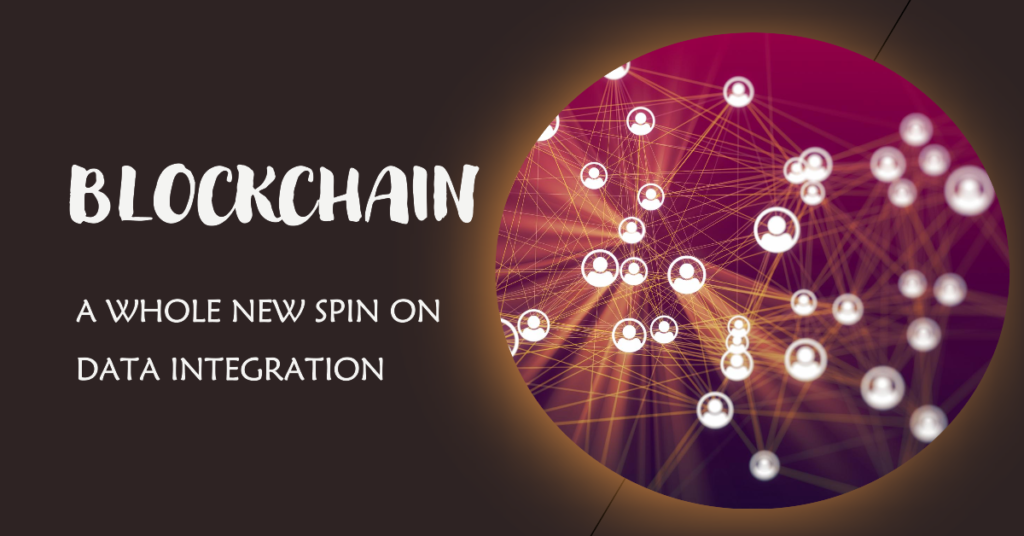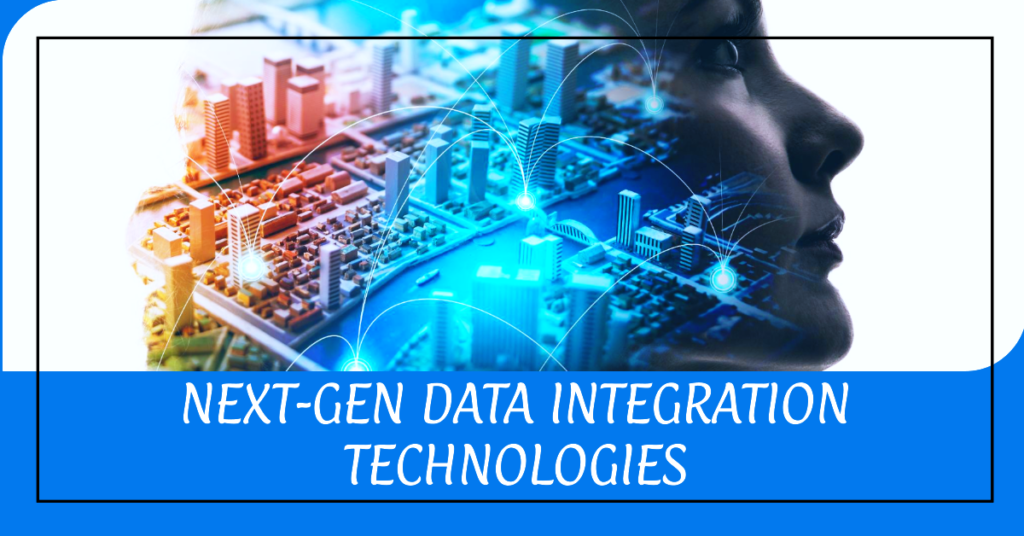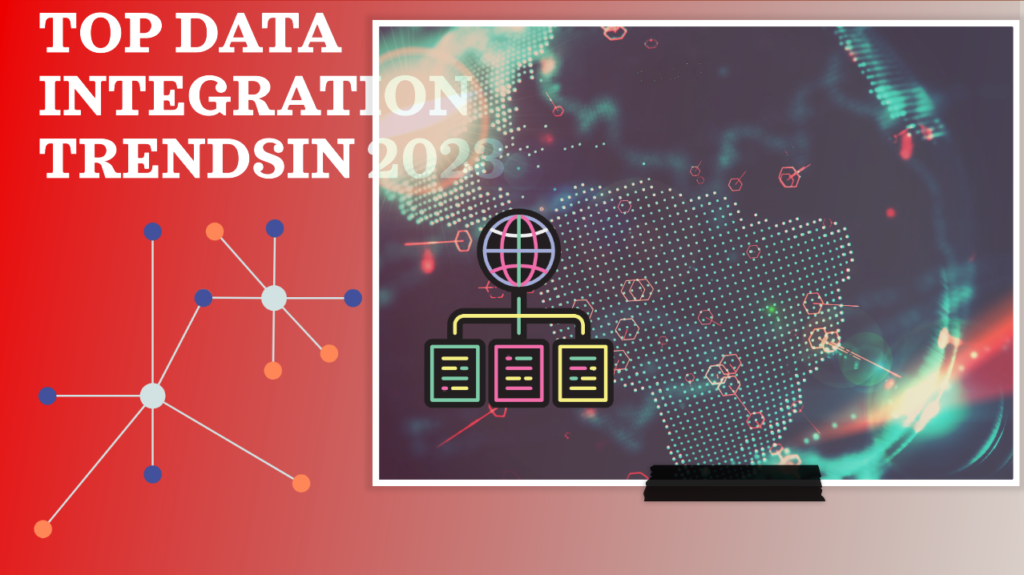If you are a business leader these days, you don’t need me to tell you that data is everything. whether it’s customer insights, sales trends, or marketing metrics. – it’s the fuel powering nearly all key decisions.
But there’s a problem. With data spread across so many different systems and databases, it’s tough to tap into its full potential. Critical customer info is trapped in your CRM. Finance data was lost in the ERP black hole. HR stats are stuck in applicant tracking tools.
This scattered data picture is a huge roadblock. How can you analyze full datasets or spot cross-functional insights when everything’s fragmented? It’s like trying to assemble a jigsaw puzzle with most of the pieces missing.
Luckily, data integration provides the solution to bring harmony to the data chaos. Data integration pulls together data from across all these different systems into one unified view. Suddenly decision makers have the full picture needed to understand customers, identify risks and drive business growth.
But with data volumes exploding and new systems popping up daily, integration is getting harder. New approaches leveraging AI, cloud platforms, and automation are needed to stay ahead in 2023.
In this article, we will explore the top data integration strategies and trends rising to prominence that can position your company for data-driven success in the year ahead. Let’s get started!
What is Data Integration in Simple Terms?

Here`s the deal – today’s businesses have critical data spread out all over the place. Finance tracks revenue in one system. Sales reps log deals in their CRM. HR`s applicant info sits in a different database. You get the point.
All these important data sets are super fragmented. Finance doesn’t know what sales are up to. HR lacks visibility into staffing needs. It’s a hot mess of data silos!
That’s where data integration comes to the rescue. It’s the process of bringing together data from all these disparate systems into one large unified view.
The sales manager can instantly see revenue trends. The marketing VP has insights into customer retention. The CEO can track progress on strategic goals. It’s data harmony!
Naturally, it’s simpler in theory than in practice. IT teams have to wrangle all these disparate data sources, extract the right info, transform it into consistent formats, and pipe everything into one place.
With data volumes exploding and systems changing all the time, it’s a heavy lift. But for companies that pull it off, the payoff is huge. Breaking down data silos provides clarity and drives better decision-making.
So in short, data integration takes scattered data chaos and turns it into beautiful data harmony. It delivers one single source of truth across the business. And it’s a must-have for any company competing today. Sure it’s tough, but the business insights make it so worth it!
Why Businesses need data Integration?
Data is everywhere in business, but using it effectively is a challenge. Data integration helps businesses make sense of all this information. Here’s why it’s crucial:
- Unified View: Data integration merges disparate datasets, offering businesses a comprehensive. A holistic view of their operations, customers, and market trends.
- Clear Picture: It gives businesses a complete view of their activities, ensuring everyone is on the same page.
- Better Choices: When all data is combined, decision-makers can see the full story, leading to smarter choices.
- Saves Time: Pulling data from one place, rather than many, speeds up tasks and projects.
- Know Your Customers: Combining customer information helps businesses understand what their customers truly want.
- Grows with You: As businesses expand, so does their data. Integration means they can handle more information without a hitch.
- Stay Updated: Businesses can see and react to the latest trends or changes instantly if their data is integrated.
- Stay on the Right Side of the Law: Clean, integrated data ensures businesses stick to rules and standards.
- Saves Money: Less repetition and more efficiency can lead to cost savings.
- Quick Changes: Businesses can try new things and switch strategies easily with a clear view of their data.
- Future-Proofing: As the digital landscape evolves, businesses will encounter new data sources. Integration ensures they can effortlessly incorporate these, staying ahead of the curve.
In a world overflowing with data, integration turns this jumble of information into clear insights, setting businesses up for success.
Top 12 Data Integration Strategies for the Future in 2023

Cloud Integration – A Smart Move in 2023
Let’s face it – trying to handle data integration with on-premises hardware and software is so last decade. Today, businesses need the flexibility and scalability of the cloud. That’s why cloud-based integration platforms have gone mainstream.

With more data and apps located in the cloud, it makes perfect sense to integrate everything using cloud-native tools. Companies can leverage the infinite scale and resources of the cloud instead of maintaining their integration infrastructure.
Cloud platforms like Azure Data Factory and Informatica Cloud allow consolidating data from SaaS applications, legacy on-prem databases, data warehouses, and more into a single-managed environment. This eliminates the need for complex point-to-point coding.
The Benefits of Cloud-based Data Integration
- Lower costs by eliminating hardware infrastructure.
- Cloud integration facilitates hybrid and multi-cloud scenarios.
- Companies should evaluate purpose-built iPaaS and ETL options to integrate their cloud and on-prem data.
Quote: As a Forrester analyst noted “Cloud data integration enables the agility and innovations businesses demand.”
AI and Machine Learning in Data Integration:
AI and machine learning are transforming data integration in 2023 by automating complex processes. Self-service data mapping, relationship inference, pattern recognition of data models, and smart data quality features are huge time savers.

ML algorithms also provide recommendations to integrate new data sources and optimize workflows. Bots can have dialogues to capture integration requirements quickly. It’s here that Artificial Intelligence (AI) and Machine Learning (ML) step in, offering a fresh, dynamic approach:
The Benefits of AI and ML Data Integration
Beyond Basic Automation:
- AI enhances data integration, ensuring it’s not just about merging data but optimizing the process.
- It identifies patterns, offering insights even before analysts know where to look.
Adapting on the Fly:
- Machine learning isn’t static.
- As data flows in, ML adapts, spotting emerging trends and shifts.
- Allowing businesses to pivot strategies seamlessly.
Deep Dive Analytics:
- With AI in the mix, data analytics is no longer surface-level.
- It delves deep, uncovering nuanced insights, from customer preferences to market anomalies.
Mastering the Data Tide:
- From vast data warehouses to real-time feeds.
- AI ensures every byte is accounted for, cleaned, and ready for analysis.
Forecasting the Future:
- One of ML’s standout features is predictive analysis.
- By understanding past behaviors and current patterns
- It offers a glimpse into future trends.
Evolving Integration Tools:
- Modern integration platforms, supercharged with AI and ML, are no longer just about merging data.
- They are about ensuring that data, whether from cloud sources or traditional systems, speaks the same language.
Setting the Trend:
- AI and ML are not just following the data integration trends to watch in 2023; they are setting them.
- Concepts like data fabric and data mesh are no longer buzzwords but necessities in this AI-driven era.
Leading the Integration Evolution:
- From concepts like data fabric and data mesh to the practicalities of integrating data from multiple sources.
- AI and ML are at the helm, dictating the future trends in data integration.
For businesses looking to not just survive but thrive, integrating AI into their data strategy isn’t a choice—it’s the way forward.
Quote: According to Gartner, “AI capabilities enhance integration tools to respond to more events, enrich data, and automate responses.”
API-led connectivity:
APIs are transforming data integration strategies by enabling seamless connectivity between apps and data sources. API-led integration provides a simpler alternative to hardcoding point-to-point links.
With API-based integration, companies only need to build connectors between applications and API endpoints to facilitate real-time data sharing. Changes to underlying systems won’t break integrations.

For Example, Stripe APIs allow extracting customer purchase data from Stripe into business intelligence tools for analysis. No custom coding is required!
API gateways add important governance, security, and scalability. As more businesses expose data via APIs, integration gets significantly easier.
Self-service data integration:
Today, business teams often have to ask IT when they need data from different systems combined. This takes lots of time. Waiting around delays important decisions.
Self-service data integration solves this problem. It gives business users simple tools to combine data on their own. No coding or IT help is required!
For example, sales managers can connect sales data with marketing data to see full customer insight. Finance analysts can merge different reports into one. No waiting is needed!
Easy-to-use software lets business users do activities like:
- Bring together data from multiple sources
- Clean and prepare data
- Merge datasets into one
- Do transformations
- Create visual dashboards
This saves huge amounts of time over waiting for IT. Decisions can happen faster with self-service analytics.
Of course, IT still guides security policies and access controls. But less tedious work leads to happier, more productive IT teams.
Self-service integration lets each department get the data they need when they need it. This allows the business to move faster.
Data privacy and security:
In today’s society, companies must handle people’s private information with great caution. Customers are unhappy when their personal data is either misused or stolen.
That’s why data privacy and security are so important in data integration. All the tools and platforms need strong protections.
- For privacy, access controls and permissions prevent unauthorized use. Sensitive data like names, emails, and financial info must be hidden or removed before sharing broadly.
- For security, data should be encrypted both at rest and in motion. No unprotected data sitting around! Authentication requires proving identity to access systems.
- Auditing tracks all activity so any suspicious access can be detected. Data should only be kept as long as legally needed, then deleted.
It takes work to ensure safety, but breaches damage reputations and cost millions. Integrating data must never compromise privacy and security standards.
Quote: As a CTO stated, “With the right controls, companies can safely and responsibly integrate data.” Keeping data safe and private maintains customer trust.
Lower Cost Integration with Open Source:
Many companies like open-source data integration tools. This means that the software is free and available to everyone. The code can be customized since it is open.
Popular open-source options include Pentaho, Talend, and Apache Airflow. These provide visual workflow builders and pre-built components to connect data.
Benefits of open source integration:
- No license fees or costs – 100% free
- Change and customize as needed
- Large communities for help and support
- Works with many data sources
- Handles large data volumes
- Frequent updates from contributors
According to surveys, over 65% of companies use open-source data integration in some way. It allows smaller teams to integrate on a budget. For the right team, open source provides a scalable, cost-effective integration approach.
Quote: As Mike Smith, VP of IT Infrastructure stated, “We rely on open source to get the job done without high vendor costs.”
Data virtualization:
Data virtualization is a technology that allows access to data without moving and copying it. The data stays in the original sources.
It uses a virtual data layer that connects users to the data they need on demand. So no data replication is required.
Benefits include:
- No copying of data saves storage and bandwidth
- Real-time data access speeds reporting
- Adds security controls not present in sources
- Avoids disruption from data warehouse migrations
- Allows combining data from many sources virtually
Data virtualization is great for reporting and analytics. But it may not suit complex transformations and workloads. For the right use cases, it provides important benefits.
Quote: As Gartner notes, “Data virtualization delivers data to users fast with less infrastructure.”
Data Governance:
Data governance means managing and controlling data appropriately. It involves setting rules and policies for data usage across a company.
Why govern data?
- Ensure high-quality information. Fix errors.
- Reduce risk by securing and protecting data.
- Standardize data definitions and formats.
- Monitor how data is used and accessed.
- Provide clear data ownership and decision-making.
- Identify new opportunities to get value from data.
Effective governance needs a strong data culture and agreed standards. Issues must be addressed collaboratively. Automation tools also help significantly.
According to research, companies with excellent data governance are 13X more likely to achieve business objectives. But only 30% of firms rate their governance as very effective.
Solid governance maximizes benefits from data while minimizing risks. Companies must make governance a priority on par with integration technology.
Blockchain – A Whole New Spin on Data Integration
Blockchain isn’t normally talked about in data integration circles. It’s associated with Bitcoin, cryptocurrencies, and decentralizing finance. But some forward-thinkers believe blockchain could provide a new approach to data integration needs.
- Blockchain stores data in small chunks called blocks
- Each block contains a timestamp and a link to the previous block
- These interconnected blocks create a chronological chain over time

Some potential benefits for data integration:
- Tamper-proof – Once in the blockchain, data can’t be secretly modified
- No central point of failure – The decentralized structure is virtually “unhackable”
- Allows sharing between untrusting parties – The blockchain acts as a neutral record keeper
However, there are downsides to evaluate:
- Blockchain can be slow compared to other methods
- Costs may be prohibitive for large data volumes
- Technology is still emerging and maturing
Quote: According to Gartner, “Blockchain shows long-term promise for enhancing data sharing and data integrity.”
However, blockchain can be slow and costly for large data volumes. The technology is still emerging for integration use cases. It’s an innovative approach worth exploring as the technology matures.
Data Mesh – A Decentralized Integration Approach
Data mesh is a new architecture gaining interest. It takes a decentralized approach to data integration.
In traditional models, data teams build one large central data platform. But this doesn’t scale as data grows.
A data mesh splits this into smaller pieces called domains. Each domain focuses on one area like customers, sales, or inventory.
Benefits of this distributed model:
- Agility – Domains can add capabilities faster
- Ownership – Domains manage their data needs
- Scalability – New domains can be added easily
- Responsiveness – Models adapt closer to business needs
Quote: As Claire Brown, lead data analyst at ResearchCo stated, “Data mesh unlocks greater data agility through decentralized data ownership.”
It requires new technologies like data catalogs, APIs, and microservices. Governance and coordination are still needed.
Data mesh provides an alternative integration paradigm worth exploring to empower domains and scale data platforms.
Continuous Data Integration – The Nonstop Approach
Historically, data integration was done in large, slow projects. First data was extracted and transformed. Then it is loaded into warehouses in batches.
Continuous data integration takes a different approach. It uses automation to integrate data in real-time, 24/7.
Benefits:
- Real-time – Data is available immediately without delays
- Agile – New pipelines created quickly to meet needs
- Efficient – Smaller, faster data updates instead of big batches
- Flexible – Easy to modify pipelines and architecture
- Preventive – Issues detected rapidly and addressed
According to surveys, 70% of data teams now do continuous integration. It requires choreography, monitoring, and a DevOps culture.
Quote: As Michelle Thomas, VP of Data Ops stated, “Continuous integration is crucial for speed in today’s fast-changing market.” For companies undergoing digital transformation, it’s an essential enabler.
Key Technologies Powering Next-Gen Data Integration
With the exponential growth of data from disparate origins, innovative technologies are imperative to meet modern integration challenges. Here we explore key solutions driving next-generation data integration.

iPaaS, ETL, and Integration Platforms
Integration platforms form the core framework for combining, converting, and making data ready for analytics and applications. Major options:
- iPaaS (integration platform as a service) – Cloud solutions like Informatica, Oracle, etc. Provide connectors, workflows, and automation. Great for cloud integration.
- ETL (extract, transform, load) – Mature tech for batch data integration and processing. Increasingly powered by cloud ETL.
- On-prem enterprise platforms – Robust capabilities but require infrastructure. Options include IBM, SAS, etc.
According to surveys, iPaaS adoption is booming. Off-the-shelf platforms enable managing complex integrations efficiently at scale.
Data Virtualization and ELT
With data virtualization, data isn’t moved but accessed in real-time across systems. ELT (extract, load, transform) shifts transformations after loading, leveraging data warehouse power.
Together, these approaches provide more agile, efficient options than always moving data first. Virtualization also enables access during warehouse migrations. Worth exploring!
Change Data Capture (CDC)
Change data capture (CDC) tracks and captures data modifications in real time. This enables:
- Streaming changed data to other systems
- Database synchronization
- Incremental ETL
CDC is invaluable for frequent data updates. It also minimizes integration downtime during migrations. CDC unlocks real-time data pipeline orchestration.
Data Replication Tools: The Underrated Superpower
In the glamorous era of AI and blockchain, reliable old data replication doesn’t get the hype it deserves. But this ingenious technique acts as a superpower for modern data architectures.
This important strategy offers many advantages:
- Enables real-time analysis without slowing down the production system
- Minimizes disastrous downtime through failover capabilities
- Meets geographic data compliance needs
- Facilitate migration between on-premises and cloud environments
Leading solutions like Oracle, GoldenGate replicates data with sub-second lag. With today’s massive data volumes, replication eases integration workload and stress on operational systems.
Experts advise investing in a robust replication plan for business continuity and next-gen architecture success such as:
Quote: As Michelle Thomas, CTO of Acme Corporation put it, “Replication is the duct tape of our data infrastructure – it holds everything together.” No major system should be built without replication superpowers these days.
API Gateways: The Integration Secret Weapon
API Gateways stand as the silent powerhouses driving today’s data connectivity. They create a unified portal, seamlessly linking apps and data via APIs.
These ports have the main responsibilities: from providing robust security and monitoring to managing data and directing traffic. Notable players in this domain include Kong, Apigee, and AWS Gateway.
Impressively, over 65% of businesses now rely on API gateways. The shift is clear: from scattered data to streamlined, API-first connectivity. These gateways ensure data is both available and effectively channeled.
Note: Yet many overlook the power of gateways. As one architect proclaimed, “API gateways are like Excalibur – wield them and you rule integration!”
For companies pursuing API-led integration, a gateway is a secret weapon.
Container Platforms and Orchestration
Containers like Docker encapsulate apps for agile, portable deployment. Orchestrators like Kubernetes choreograph container infrastructures. Experts say they provide the scaffolding as integration goes microservices.
According to Red Hat, containers optimize workload portability and scalability. For future-proof integration, containers are the stage and orchestrators are the conductors.
Note: “We are containerizing our integrations for cloud-native deployment and lifecycle management.”
Cloud Infrastructure
Cloud platforms are rocket fuel for next-gen integration, with unlimited scale and availability. According to IDC, public cloud spending grew by over 36% in 2022. AWS, Azure, and GCP offer turnkey data services to amplify integration.
As one CTO proclaimed, “Migrating to the cloud transformed integration from a constraint to a competitive advantage.” With the turnkey scale and innovation, the cloud powers new integration capabilities that redefine the art of the possible.
Metadata Management Tools
Metadata catalogs provide visibility into data ecosystems with technical, business, and process metadata. Leading solutions like Alation tackle data challenges like silos, governance, and lack of standards. Top solutions like Alation, Collibra, and Atlan help tame data chaos.
According to analysts, treating metadata as a first-class discipline amplifies value. It provides the compass for navigating complexity. To thrive in increasingly turbulent data seas, metadata management delivers visibility and direction.
Building a Future-Proof Data Integration Strategy
With complex data, having a strong integration strategy is key for managing needs today and tomorrow. Here are important tips:
- Look at current challenges. Find where data is stuck in silos. See where things are broken.
- Must choose the options that suit your requirements the most. Whether it’s the Cloud, API, or self-service, each offers unique advantages. Cultivate the adaptability to evolve.
- Invest in training teams on new techniques. Mastery of integration is mandatory.
- Automate processes using orchestration and DevOps. Increase speed, and reduce mistakes.
- Monitor integrations closely. Optimize and enhance based on telemetry.
- Security is crucial – encrypt data, limit access, and mask sensitive data.
- Ensure integrations can adapt as needs change. Cloud and APIs allow responsiveness.
With the right strategy, companies can ride the integration wave with confidence. Start planning now so the future doesn’t leave you behind!
What are the Challenges of Data Integration Today?
Data integration faces major new challenges as data volumes explode, sources multiply and needs rapidly evolve. Key hurdles include:
- Complexity – With more data and systems, mapping intricate relationships and dependencies grows exponentially harder. Integrations require greater technical specialization.
- Speed – Traditional integration approaches like batch ETL are too slow for real-time needs. Latency issues impact agility.
- Scale – Vast data growth is the overwhelming ability of legacy systems. Lack of scalability constrains the potential of data.
- Security – Protecting sensitive and regulated data is increasingly difficult with more touch points. Data breaches erode trust.
- Monitoring – Tracking the end-to-end health and lineage of complex integrations is a major blindspot. Lack of visibility impedes optimization.
- Agility – Rigid, hardcoded integrations prevent adapting to new data and systems. Innovating requires more flexible integration.
- Cost – Integrating a maze of old and new technologies is resource-intensive. Integration accounts for up to 30% of project costs.
Quote: As Becky Ward, Chief Data Officer at Acme Corporation stated, “The integration challenges today would have been unthinkable just five years ago.”
To overcome hurdles, modern integration strategies and tools are essential. Those who fail to adapt will not survive the intensifying data deluge.
How to Tackle Data Integration Challenges
With complex data, what steps can companies take to master integration hurdles? Useful tips:
- Evaluate cloud platforms like Informatica to reduce on-site issues and scale easily. Cloud brings automation.
- Use AI and machine learning to handle tedious mapping tasks. Algorithms self-tune and adapt.
- Build API-based modular architecture for connecting apps and data with agility. APIs abstract complexity.
- Enable self-service integration with easy tools to empower users. Governance is still important.
- Implement continuous monitoring and delivery for faster integrations and real-time tracking.
- Secure integrations through encryption, access controls, and API gateways. Leave no openings.
- Train staff on the latest techniques like streaming, containers, and graph databases. Skills are mandatory.
Quote: As Priya Singh, Architect at Acme Corporation said, “With the right solutions and skills, integration can become a competitive advantage.” Take proactive steps now to tackle the decade ahead.
Wrapping Up:
Today’s exploding data volumes and the need for speed overwhelm old data integration methods. Batch processes are too slow. Companies must evolve to survive.
New technologies like cloud, AI (artificial intelligence), and APIs provide hope. But skilled teams, strong data culture, and governance are equally critical.
With complex, growing data, creative rethinking is needed – not just minor improvements. Innovations like blockchain highlight the untapped potential.

Opportunity awaits companies embracing integration solutions advances with vision and focus. Those cracking today’s data integration trends code will transform data from burden to business fuel.
Taming the data tidal wave takes work. But a bright future is possible for forward-looking firms. By prioritizing integration, they can transition it from obstacle to accelerator.
Data will keep proliferating. But by riding the innovation wave, companies can benefit instead of drowning. Future success belongs to those conquering integration today and continuously adapting for tomorrow. Start the journey now.
Muhammad Asif Saeed has extensive experience in commerce and finance. Specifically, He holds a Bachelor of Commerce degree specializing in Accounts and Finance and an MBA focusing on Marketing. These qualifications underpin his understanding of business dynamics and financial strategies.
With an impressive 20-year career in Pakistan’s textile sector, including roles at Masood Textile (MTM) and Sadaqat Limited, excelling in business & financial management. His expertise in financial and business management is further evidenced by his authoritative articles on complex finance and business operation topics for various renowned websites including businessproplanner.com,businesprotips.com,distinctionbetween.com, trueqube.com, and bruitly.com, demonstrating his comprehensive knowledge and professional expertise in the field.


9 thoughts on “Top Data Integration Trends That You Need to Watch in 2023!”